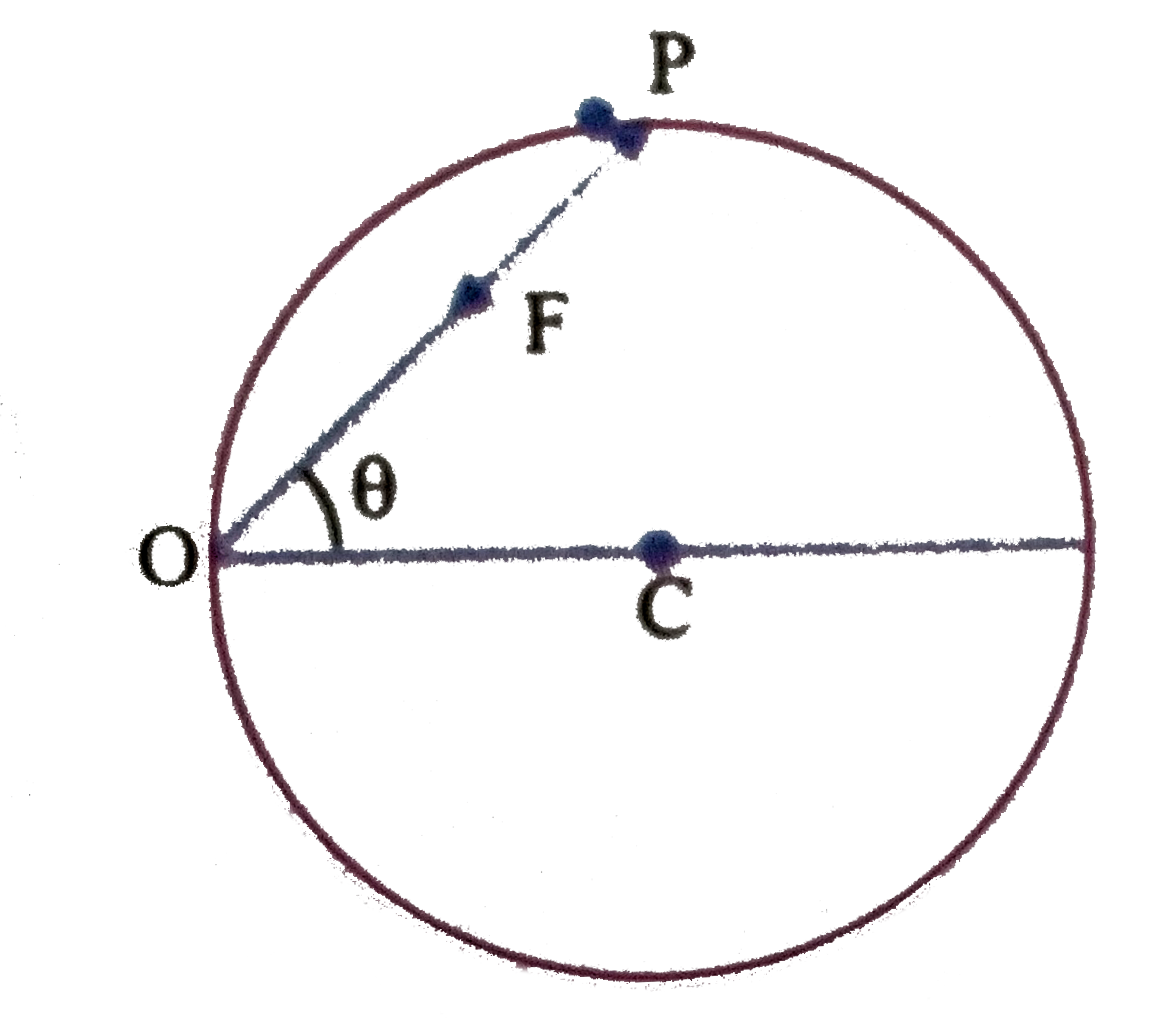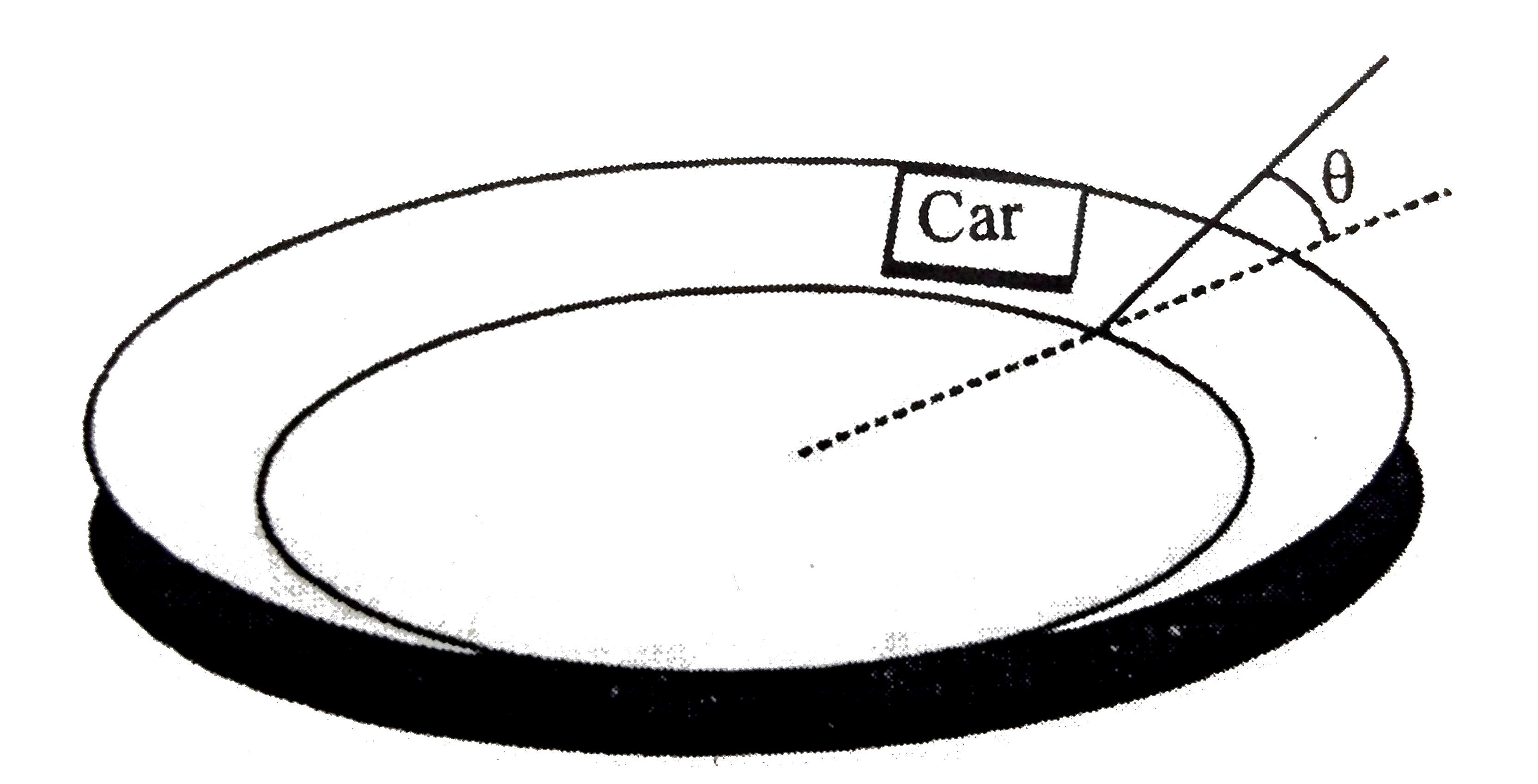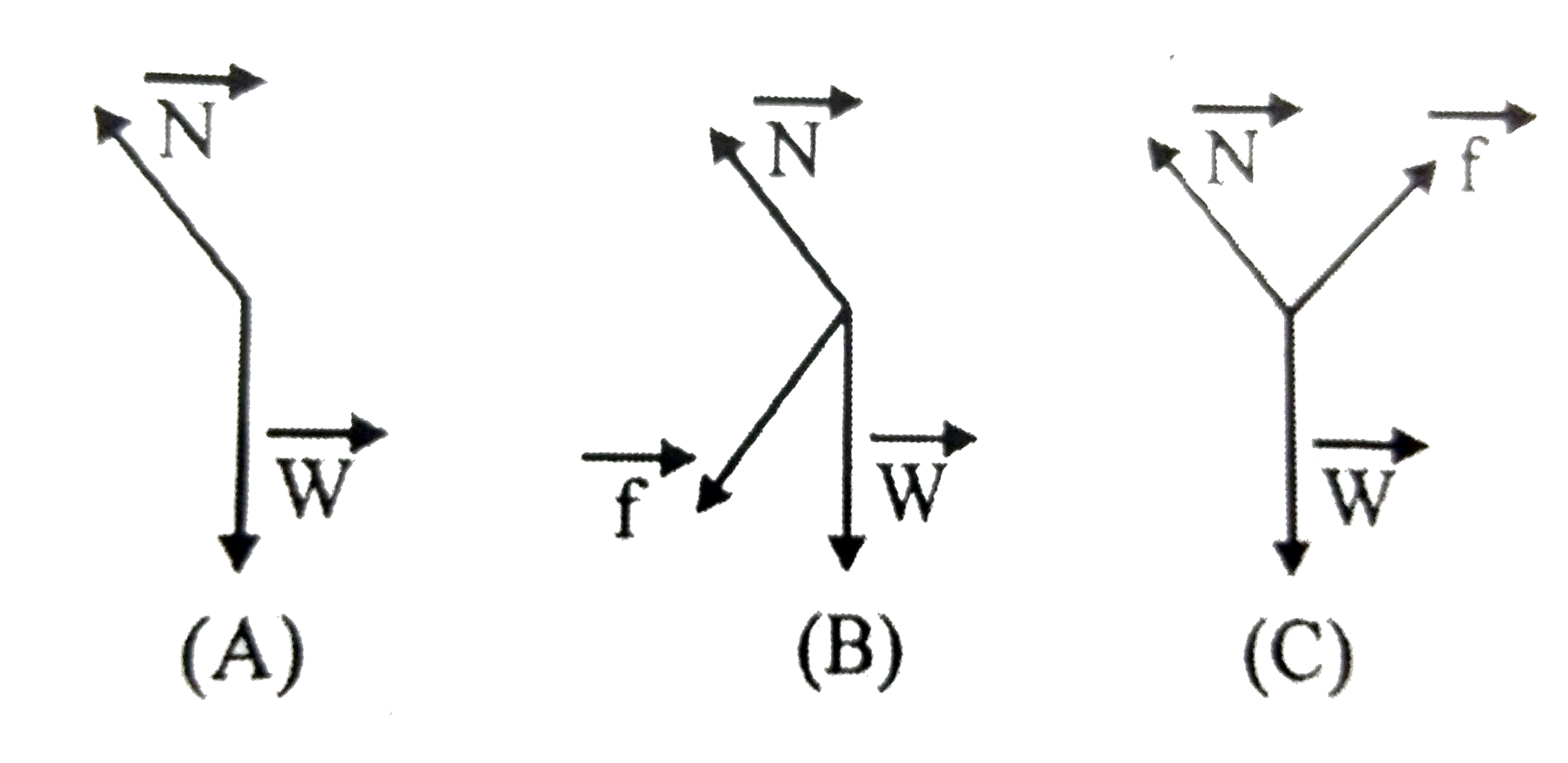A particle 'P' is moving on a circular path under the action of only one force action always toward the fixed point 'O' on the circumference. Find the ratio of d2θdt2 & (dθdt)2
 Solution in Gujrati
Solution in Gujrati
The correct Answer is:2tanθ
Step by step video & image solution for A particle 'P' is moving on a circular path under the action of only one force action always toward the fixed point 'O' on the circumference. Find the ratio of (d^(2)theta)/(dt^(2)) & (("d"theta)/(dt))^(2) by Physics experts to help you in doubts & scoring excellent marks in Class 12 exams.
Updated on:21/07/2023Topper's Solved these Questions
- CIRCULAR MOTIONBOOK - ALLEN CHAPTER - CIRCULAR MOTIONEXERCISE - EXERCISE(O-1)
22 Videos
- CIRCULAR MOTIONBOOK - ALLEN CHAPTER - CIRCULAR MOTIONEXERCISE - MCQ
14 Videos
- CIRCULAR MOTIONBOOK - ALLEN CHAPTER - CIRCULAR MOTIONEXERCISE - Dynamics of circular motion
8 Videos
- BASIC MATHSBOOK - ALLEN CHAPTER - BASIC MATHSEXERCISE - Question
1 Videos
- CURRENT ELECTRICITYBOOK - ALLEN CHAPTER - CURRENT ELECTRICITYEXERCISE - EX.II
66 Videos
Similar Questions
The area of the parallelogram represented by the vectors →A=2ˆi+3ˆj and →B=ˆi+4ˆj is
View SolutionA car is moving with constant speed on a rough banked road.

Figure shows the free body diagram of car in three situation A, B & C respectively:

View SolutionThe ball of mas m moves with speed v againest a smooth , fixed vertical circular groove of radius R kept on smooth horizontal surface find the
a. normal reaction of the floor or the ball.
b. normal reaction of the vertical wall on the ball.
View SolutionFind dydx for the following :
(i) y=x7/2 (ii) y=x−3
(iii)y=x (iv) y=x5+x3+4x1/2+7
(v) y=5x4+6x3/2+9x (vi) y=ax2+bx+C
(Vii)y=3x^(5)-3x-1/x
View SolutionIn the Bohr's model of hy drogen atom, the electron moves around the nucleus in a circular orbit of radius 5×10−11m. Its time period is 1.5×10−16s. The current associated with the electron motion is:-
View SolutionA particle 'P' is moving on a circular under the action of only one force action always toward the fixed point 'O' on the circumference. Find the ratio of d2θdt2 & (dθdt)2

View SolutionIt x=sin^(2)theta , then find (dx)/(dt) where (d theta)/dt)=omega
View SolutionA particle is moving under the influence of a force which is fixed in magnitude and acting at an angle theta in the direction of motion. The path described by the particle is
View SolutionA particle is moving in a circular path of radius a under the action of an attractive potential U=−k2r2. Its total energy is :
View SolutionFor the reaction,2NO2→2NO+O2 ,rate is expressed as :
(a) −12d[NO2]dt=12d[NO]dt=d[O2]dt
(b) −12d[NO2]dt=−12d[NO]dt=d[O2]dt
(c) −2d[NO2]dt=2d[NO]dt=d[O2]dt
(d) −d[NO2]dt=d[NO]dt=d[O2]dt
View SolutionA particle is moving in a circular path of radius a under the action of an attraction potential U=−k2r2. Its total energy is
View SolutionA particle moves along a circular path under the action of a force. The work done by the force is
View SolutionA particle moves along a circular path under the action of a force. The work done by the force is
View SolutionA charged particle is moving in a circular path under the action of the Lorentz force. How much work is done by the force in one revolution?
View SolutionA particle is moving in a circular path of radius a under the action of an attractive potential U=-(k)/(2r^(2)) . Its total energy is :
View SolutionA particle is moving in a circular path of radius a under the action of an attractive potential U = -k/(2r^(2)) .Its energy is
View Solution
